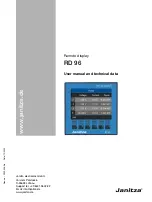
Eaton’s Crouse-Hinds Business
Cooper Crouse-Hinds Pte Ltd
No. 2 Serangoon North Ave 5 #06-01
Singapore 554911
tel: + 65 6645 9888
fax: +65 6297 4819
Page 45
Alarm hysteresis (no alarm
→
alarm
→
no alarm) is 3mV for low frequency and high
frequency, and 2 mV for in-band frequency.
All peak noise limits are set to 65535 mV and hence disabled. This will ensure that
users do not get nuisance alarms in a factory-default condition.
Note that once these maximum limits are exceeded, the segment is operating outside
the specification, which means that proper operation is no longer guaranteed. MTL
hence suggests to lower the values in order to get high-high alarm before the segment
fails.
Typical plants will have values in the following magnitude:
o
Average Noise levels: typically 20 mV or below
o
Peak Noise levels: typically less than 50 mV, typically in the LF frequency
range. In-band frequency and high frequency peak noise levels are typically in
the magnitude of 30 mV to 40 mV.
MTL recommends to consider lowering the default limit values and bring them close
to the actual values experienced.
Device signal amplitude limits
The physical layer standard IEC 61158-2 specifies transmit levels of 750 mV to
1000 mV under test conditions with two terminators. Under plant conditions, the
actual values will differ from segment to segment, and under some circumstances
even significantly.
Values down to 550 mV and up to 1200 mV should however cover most applications.
The default limits are set to the following:
Alarm hysteresis (no alarm
→
alarm
→
no alarm) is 10 mV. Note that the limit values
have to be in rising sequence at all times:
Low-low-limit
≤
low-limit < high-limit
≤
high-high-limit
and high limit must be at least 20 mV higher than low limit.
















































